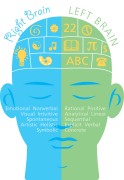Welcome to the second installment from my book: Who says you’re not creative?
The first section of the book is headed Our starting point : Where are we now? It includes 4 ideas for your consideration. The first was posted last week “A logical-rational bias” and I am pleased to say it prompted a good discussion. (Press ‘previous’ to view). The next two sections are below. Again very short but I hope they are thought provoking.
Straitjacketed?
We are all straitjacketed to a certain extent. We take on the mantels of the organisations and institutions we become part of and begin to think and behave in a certain way – ‘group think’.
Even if we rebel it is often against the parameters set by the context so we are, to a certain extent, still locked within a given system.
When developing a workshop recently, I found myself trapped by the value I placed on established ‘models of creativity’ instead of giving value to my own thinking and ideas. I kept myself in the bounds of the knowledge created by others, which surrounded and created my world and understanding of the subject. What was this if not straitjacketed thinking?
Scared to play
As adults we are scared to play. Our notion of being an adult, especially at work, is being sensible, serious, measured discussions and debates, little laughter. Having fun is frowned upon and seen as ‘not working’.
We all know of some of the famous companies who encourage play and fun environments like Google and Innocent but these are few and far from the everyday experience of what most of us know as ‘work’.
In my workshops I sometimes ask people to draw a problem, or mould their problem using play dough. There are usually three reactions: some people become paralysed by the situation; others laugh and eventually start playing and make something fairly descriptive; and the third, smaller group relish the challenge and often create something a little more left field, metaphorical. It’s as if they have been waiting for someone to give them permission to let out their creative selves.
The majority of us feel embarrassed, too self-conscious, as adults to do this kind of thing. Are we afraid of what people will think? Are we afraid of looking stupid?
Will this same fear keeps us from presenting new, off the wall ideas, to our peers? In which case – it becomes a problem.
My questions for you:
Do you feel ‘straitjacketed’ in anyway? How much of this is self imposed?
(It was this realisation that prompted me to write my book- it was the vehicle through which I could ask myself what i thought about the subject of creativity.)
Are you scared or too self conscious to play/ be playful in your attitude?
Are you lucky enough to be in a work environment that encourages a sense of creative play/ exploration?

